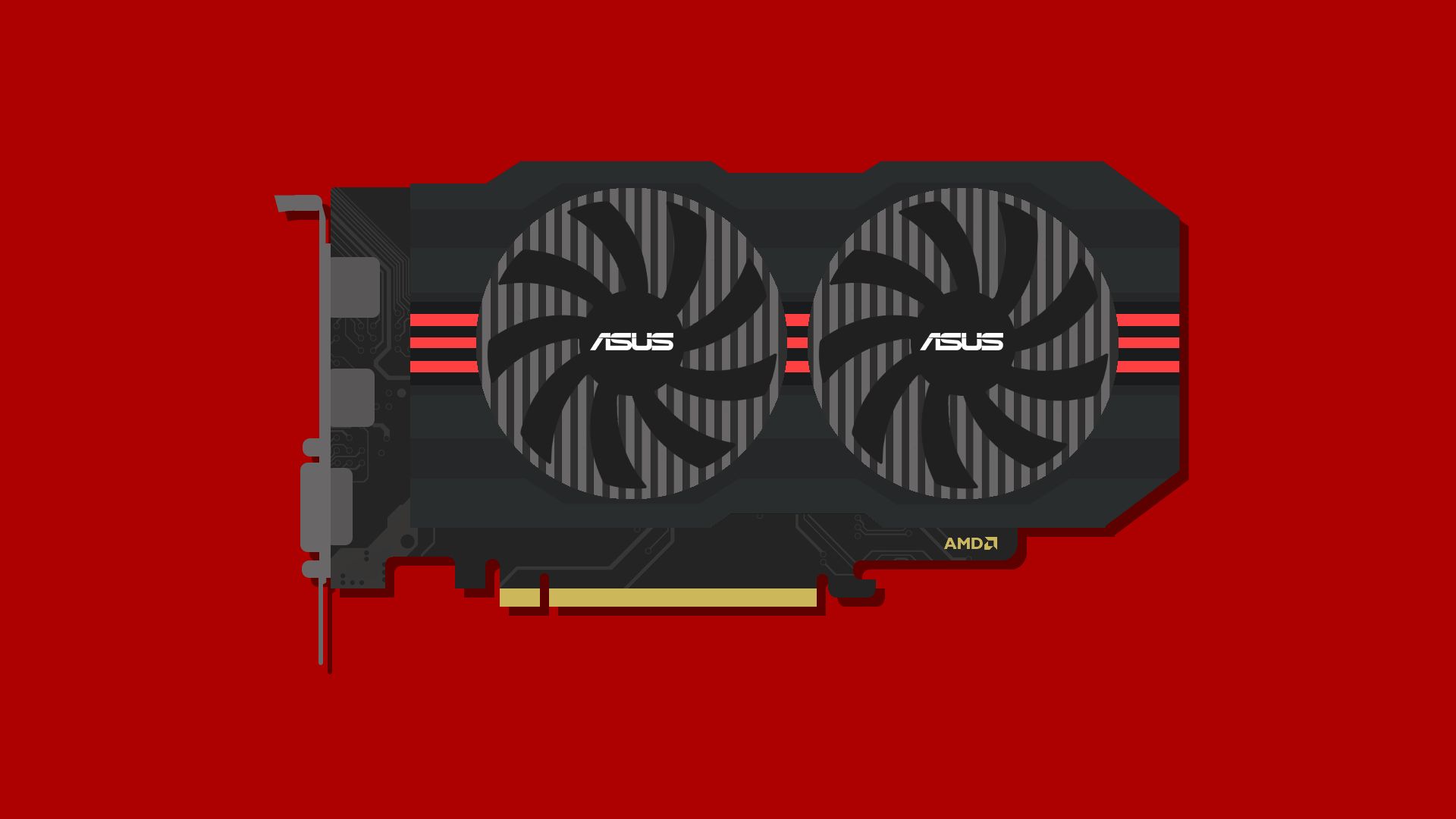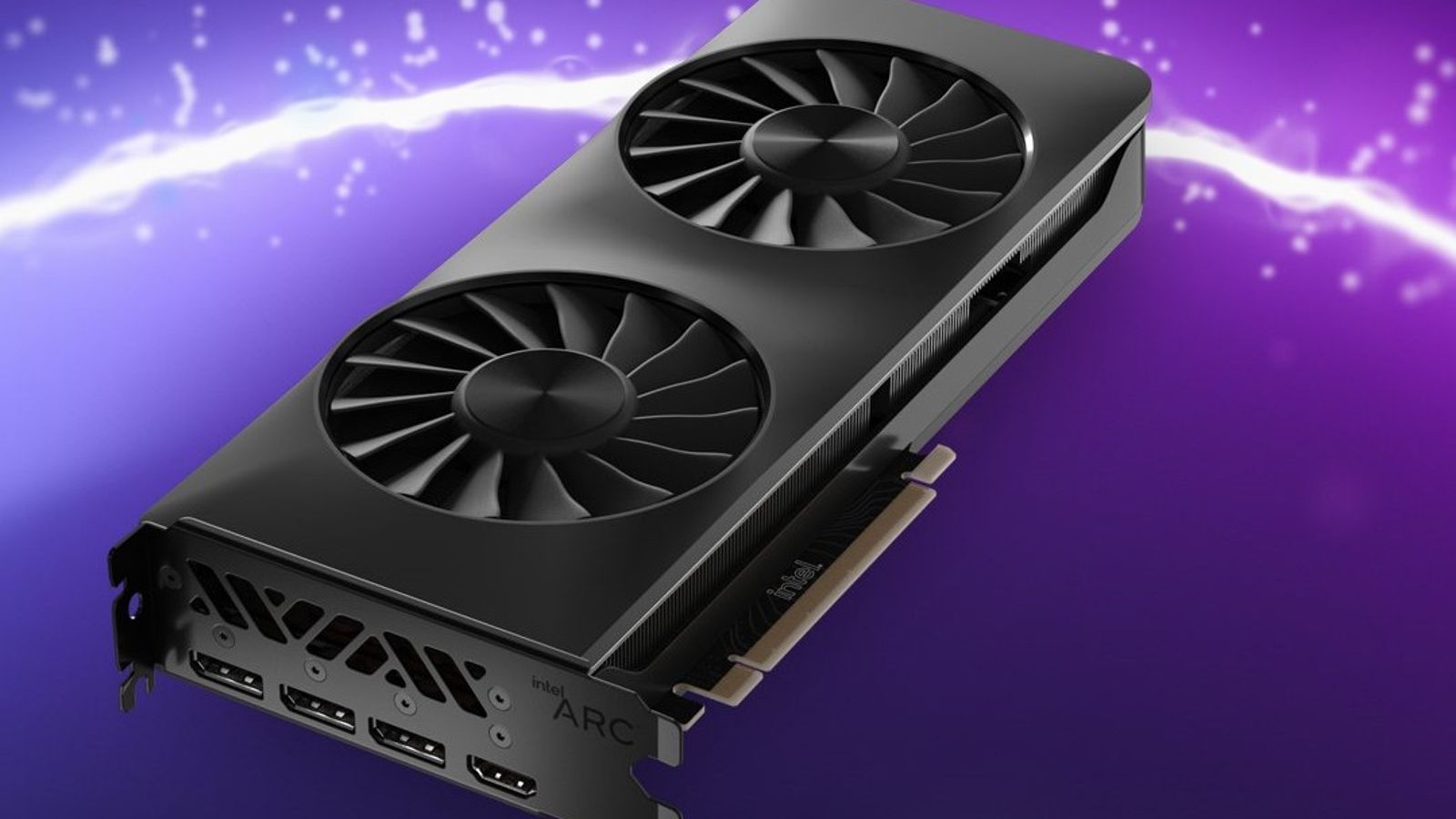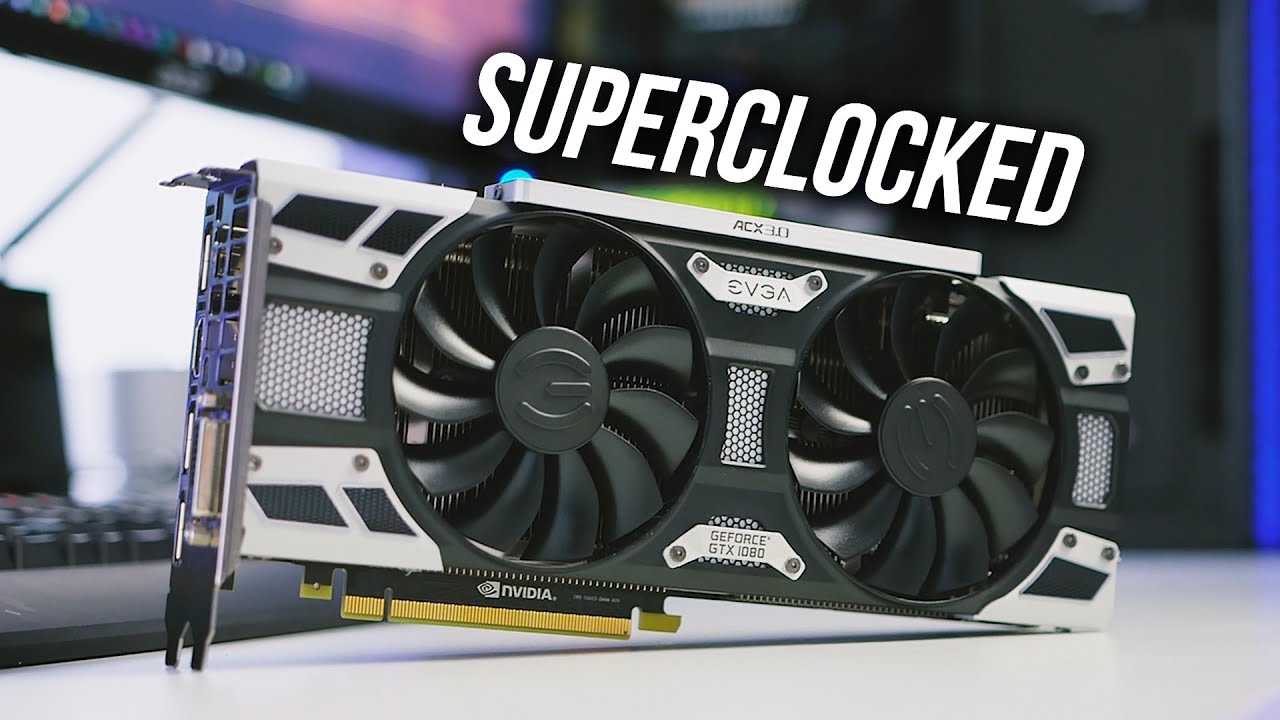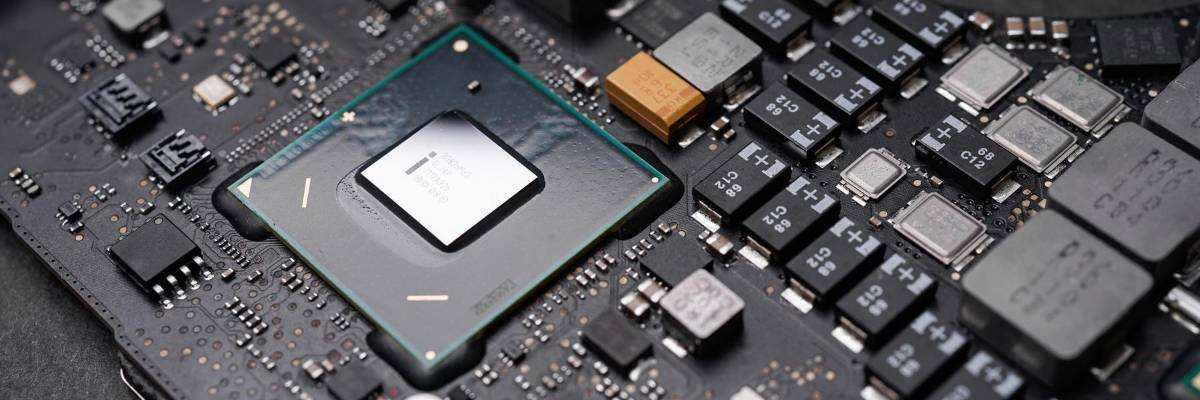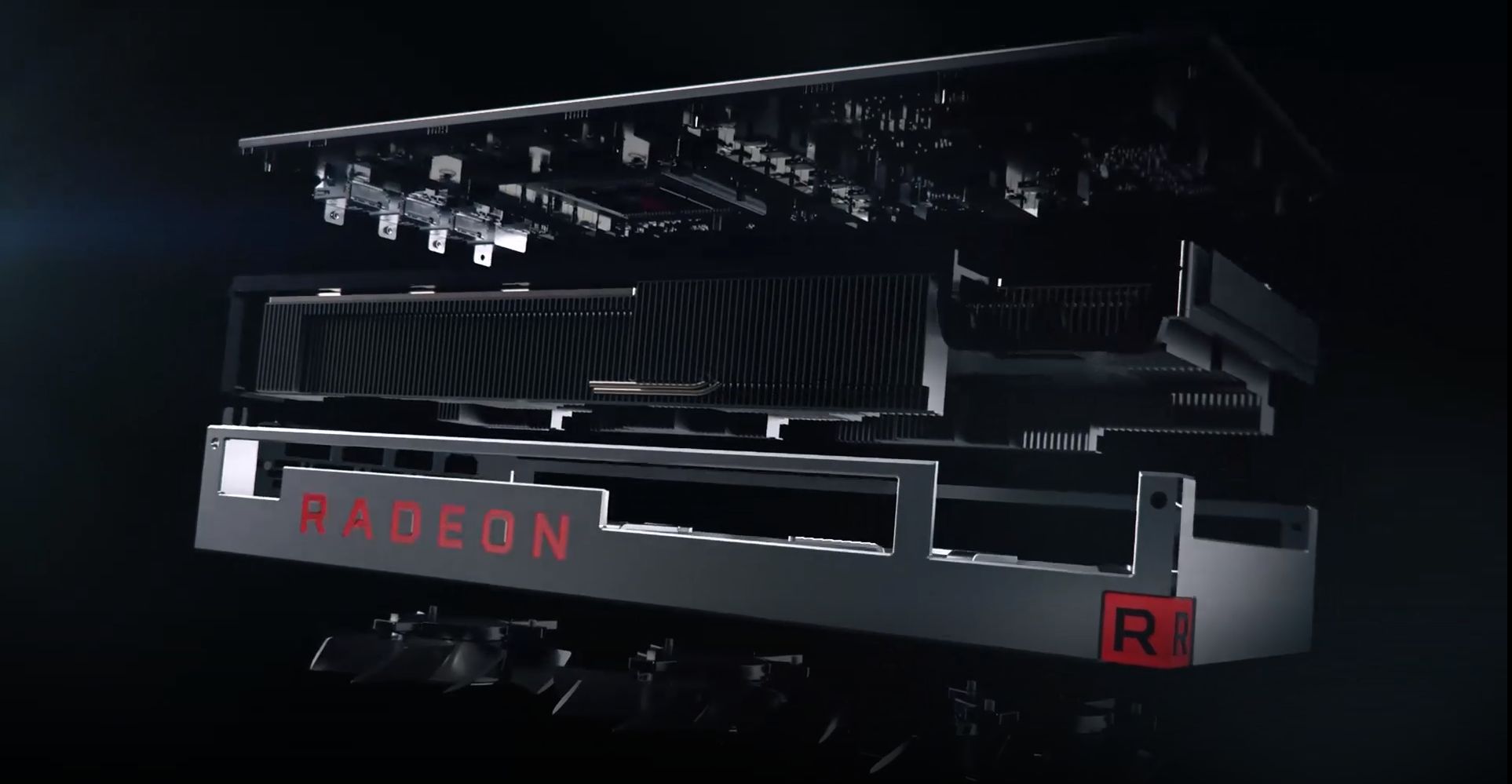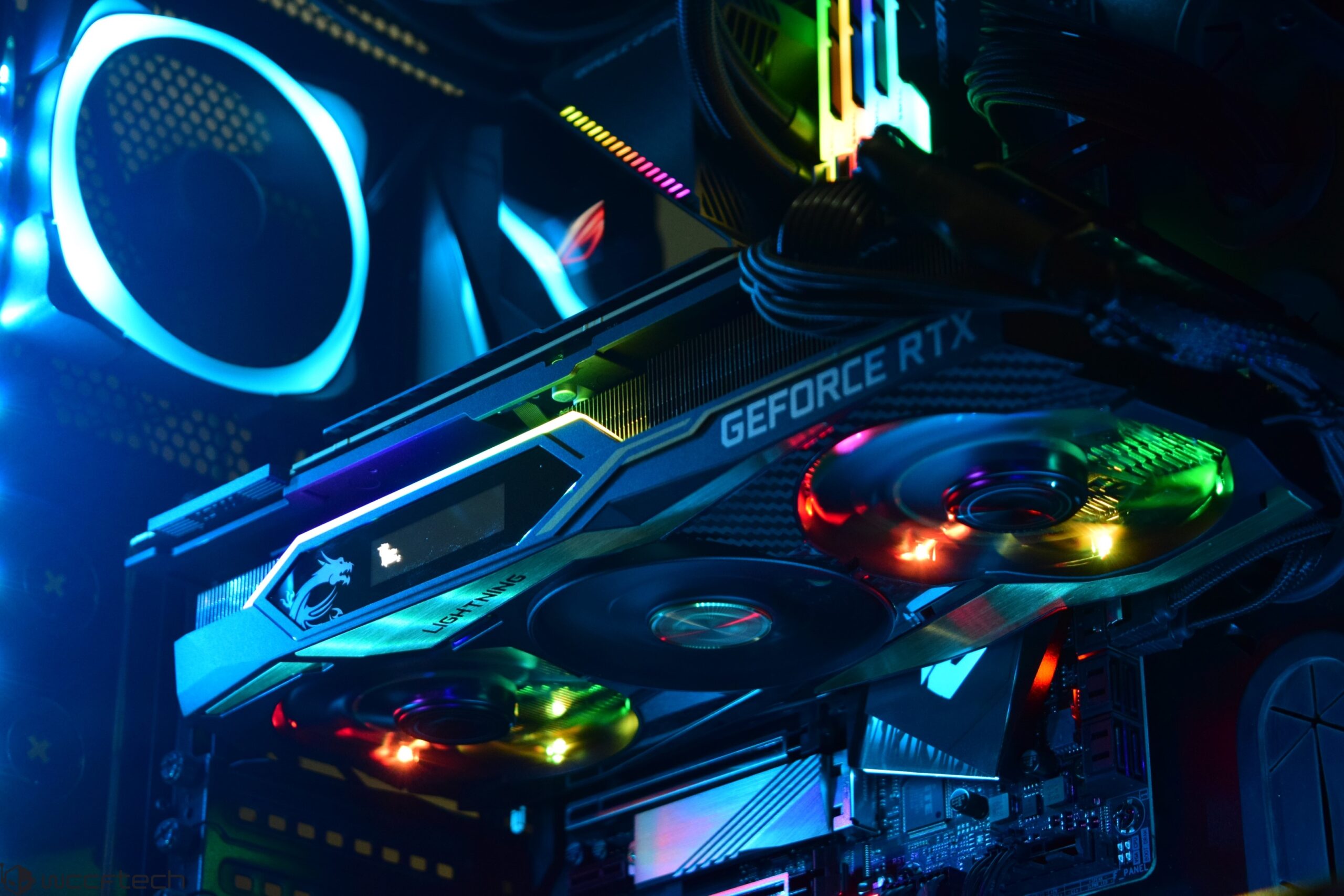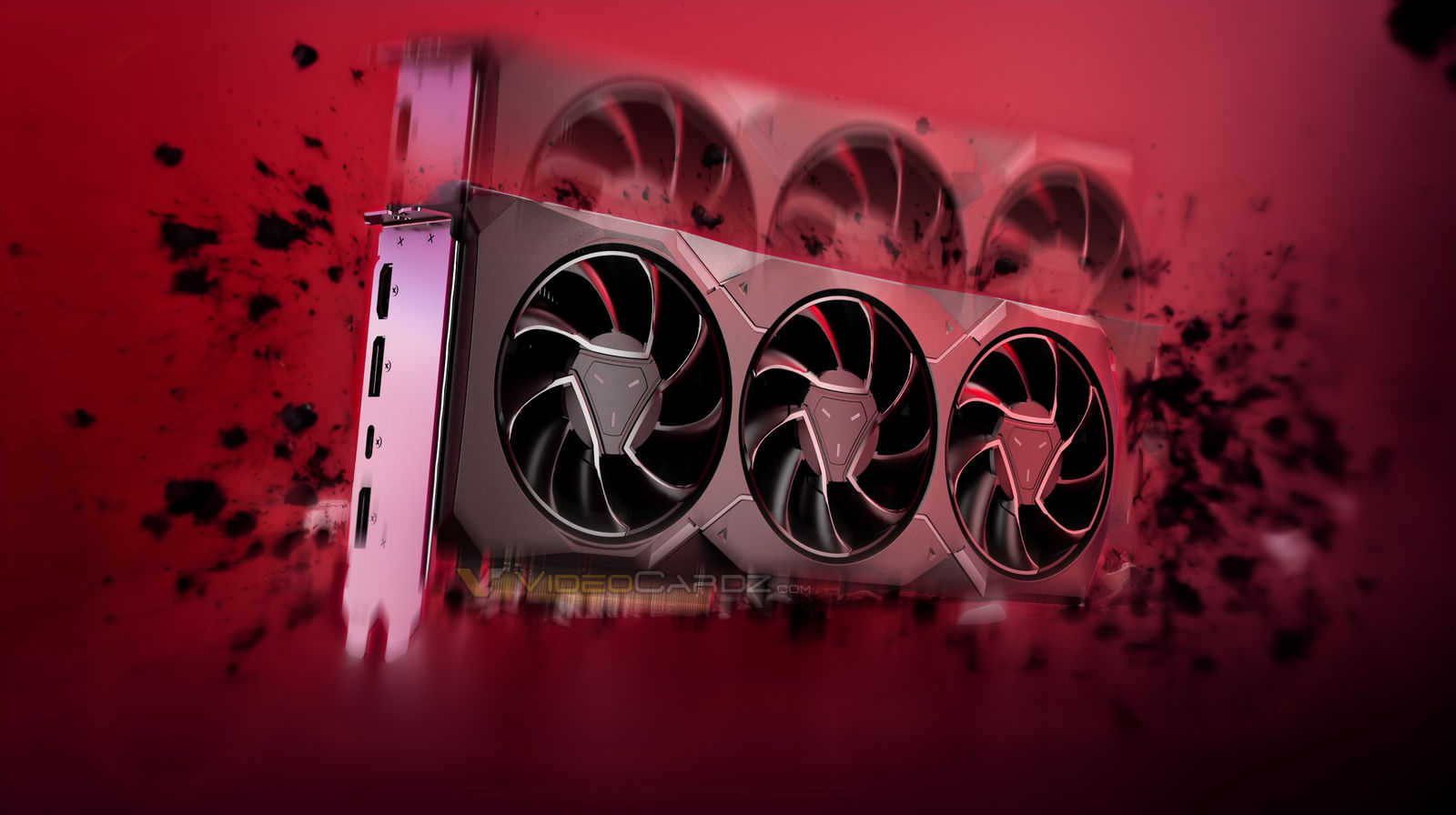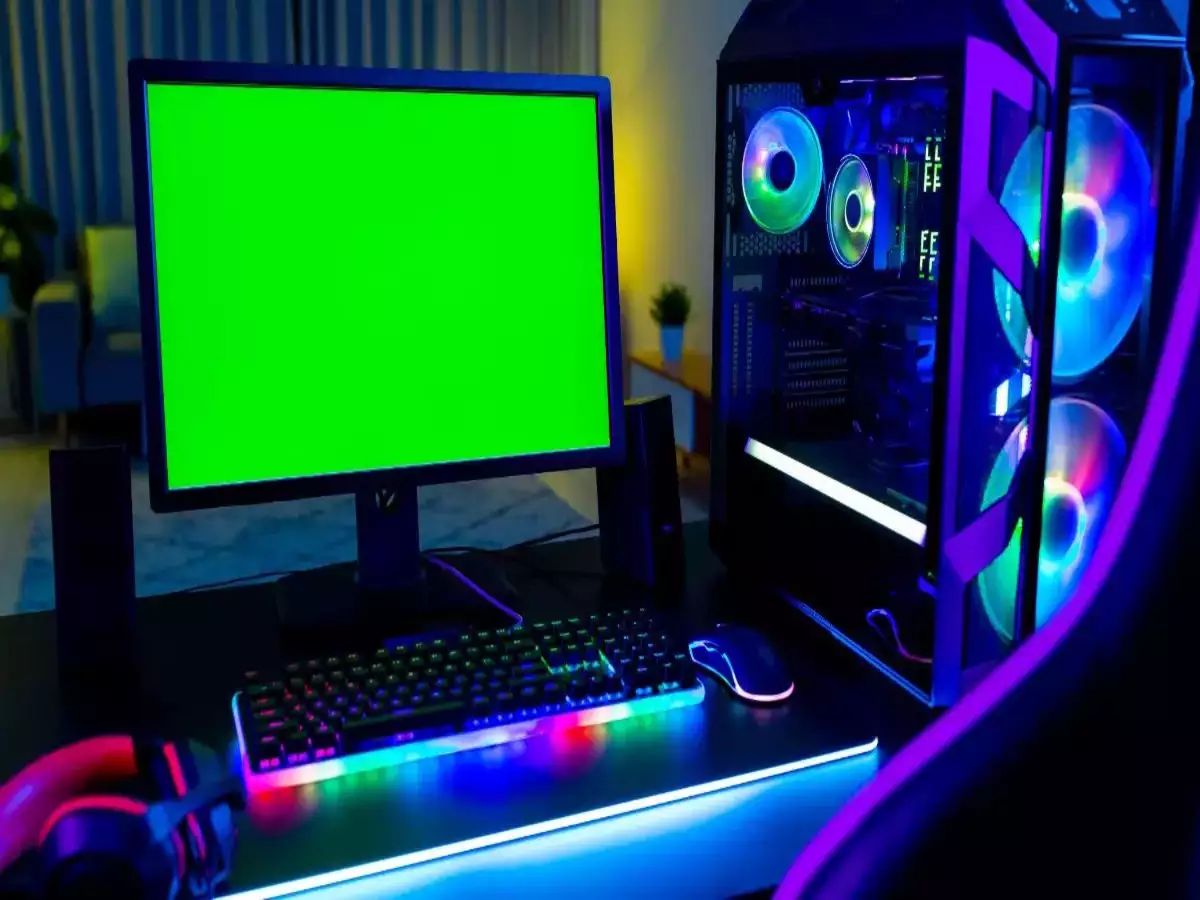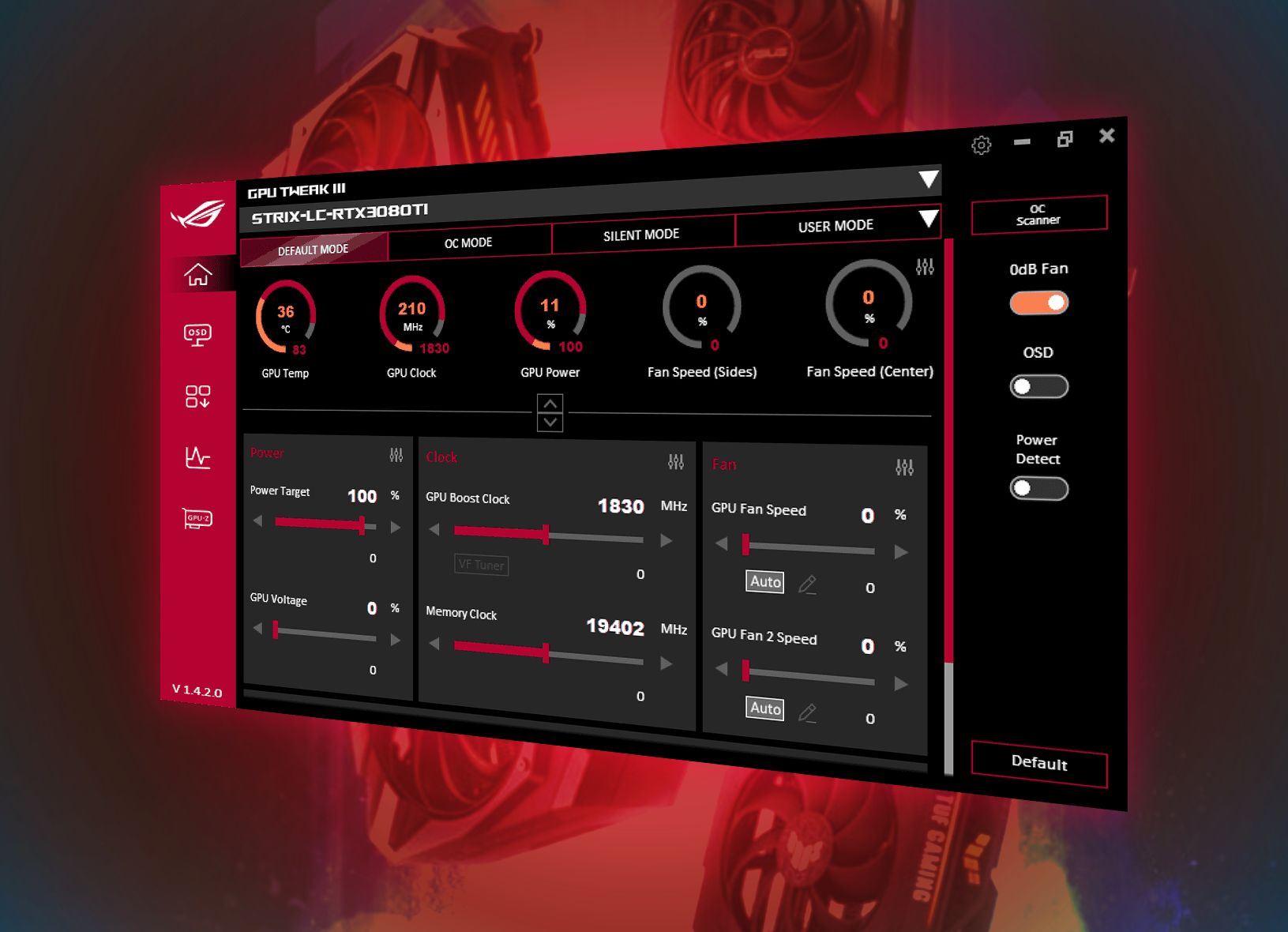Introduction
Welcome to the world of GPU performance optimization! If you’re an avid gamer, graphic designer, or even a casual computer user, you’ve probably heard of the term “GPU” or Graphics Processing Unit. The GPU is a crucial component in your computer that specializes in rendering graphics and images.
Having a well-performing GPU can make a significant difference in your overall computing experience. Whether you’re playing the latest games or working on intense graphic design projects, a faster and more efficient GPU can result in smoother gameplay, quicker rendering times, and overall improved performance.
In this article, we’ll explore various methods to increase GPU performance and get the most out of your graphics card. We’ll provide you with practical tips and techniques that can help you optimize your GPU performance and elevate your gaming or design experience to the next level.
Before we dive into the nitty-gritty details, it’s important to note that GPU performance optimization requires a basic understanding of computer hardware and software. We recommend that you proceed with caution and adhere to any manufacturer guidelines when making changes to your GPU settings.
Now that we’ve set the stage, let’s move on to the exciting world of GPU performance optimization! In the following sections, we’ll discuss how to update your graphics drivers, adjust your graphics card settings, overclock your GPU, clean your GPU, and optimize in-game settings.
By the end of this article, you’ll have a comprehensive understanding of the steps you can take to boost your GPU performance and enhance your overall computing experience. So, without further ado, let’s get started!
Understanding GPU Performance
Before we delve into optimizing GPU performance, let’s take a moment to understand what factors influence it. GPU performance is affected by several key elements, including:
- Graphics Memory (VRAM): The amount of dedicated video memory on your GPU plays a crucial role in handling complex graphical tasks. More VRAM allows for smoother rendering and better performance, especially in graphics-intensive applications.
- Graphics Card Model: Different graphics cards are designed with varying capabilities. The higher-end models typically offer superior performance due to more significant processing power and advanced features.
- GPU Clock Speed: The clock speed refers to the speed at which the GPU’s cores operate. Higher clock speeds lead to faster data processing and better overall performance.
- Shader Units: Shader units, also known as CUDA cores or Stream Processors, are responsible for processing complex visual effects. GPUs with more shader units can handle more advanced graphical tasks, resulting in enhanced performance.
- Thermal Design Power (TDP): TDP represents the maximum amount of heat that your GPU is designed to dissipate. Ensuring that your GPU stays within its TDP range is vital for maintaining optimal performance and preventing overheating.
Understanding these factors is important when optimizing GPU performance because different techniques may have varying effects depending on your GPU’s specifications. It’s also worth noting that GPU performance is heavily influenced by the software you’re using, such as games, graphic design software, or video editing applications. These programs often have recommended system requirements, and meeting or exceeding them can lead to better performance.
Additionally, keep in mind that GPU performance is not solely determined by the GPU itself. Other components, such as the CPU, RAM, and storage, also play a role in overall system performance. Therefore, it’s essential to maintain a well-balanced system to achieve the best possible GPU performance.
Now that you have a better understanding of the factors that impact GPU performance, let’s move on to practical tips and techniques you can use to optimize your GPU and unleash its true potential. Remember to take into account your specific GPU model and the software you’re using to make informed decisions when applying these optimizations.
Updating Graphics Drivers
One of the most crucial steps to improve GPU performance is to ensure that you have the latest graphics drivers installed. Graphics drivers are software programs that facilitate communication between your operating system and your GPU, allowing it to perform at its best. Outdated drivers can result in diminished performance, compatibility issues, and even system crashes.
To update your graphics drivers, you can follow these steps:
- Identify your GPU model: Before updating your drivers, it’s essential to know the exact model of your GPU. You can usually find this information in your computer’s device manager or by checking the manufacturer’s website.
- Visit the manufacturer’s website: Once you have identified your GPU model, visit the manufacturer’s website, such as NVIDIA or AMD. These websites typically provide driver downloads specifically tailored to your GPU model.
- Download and install the latest drivers: Navigate to the driver download section on the manufacturer’s website and locate the latest driver for your GPU model. Download the driver and follow the installation instructions provided by the manufacturer.
- Restart your computer: After installing the updated graphics driver, it’s essential to restart your computer to ensure that the changes take effect.
Updating your graphics drivers can bring various benefits, including improved performance, bug fixes, and compatibility enhancements. It’s recommended to periodically check for driver updates, as manufacturers often release new versions to optimize performance and address any known issues.
In addition to manually updating your graphics drivers, you may also consider using driver management software. These programs automatically scan your system for outdated drivers and provide convenient methods to update them. Popular driver management software includes Driver Booster, Driver Easy, and Snappy Driver Installer.
By keeping your graphics drivers up to date, you can optimize GPU performance, ensure system stability, and unlock the latest features and improvements offered by the manufacturer. However, it’s essential to download drivers from official sources to avoid potential malware or compatibility issues.
Now that you’ve updated your graphics drivers, let’s move on to the next section, where we’ll explore adjusting graphics card settings to further optimize GPU performance.
Adjusting Graphics Card Settings
When it comes to optimizing GPU performance, adjusting graphics card settings can have a significant impact. Your graphics card settings determine how your GPU performs in various applications, including games and graphic design software. By tweaking these settings, you can customize your GPU’s performance profile to suit your specific needs.
Here are a few settings you can adjust to enhance your graphics card’s performance:
- Power Management: Most modern GPUs come with power management features that allow you to balance performance and power consumption. Depending on your needs, you can adjust these settings to prioritize performance or energy efficiency.
- Texture Filtering: Texture filtering determines the level of detail in textures rendered on your screen. Adjusting this setting can help optimize GPU performance without sacrificing visual quality. Options typically include bilinear, trilinear, or anisotropic filtering.
- Anti-Aliasing: Anti-aliasing reduces jagged edges in games and graphics. While it improves image quality, it also puts a strain on your GPU. Adjusting the anti-aliasing settings can provide a good balance between visual fidelity and performance.
- Vertical Sync: Vertical sync, also known as VSync, synchronizes the GPU’s rendering with the monitor’s refresh rate. Enabling VSync can prevent screen tearing, but it may impact performance. Consider disabling VSync if you experience performance issues in fast-paced games.
- Resolution and Display Settings: Lowering the resolution or adjusting display settings, such as reducing the number of shadows or disabling certain effects, can significantly improve performance. Experiment with different settings and find the right balance between visual quality and performance.
Accessing graphics card settings typically involves using dedicated software provided by the manufacturer, such as NVIDIA Control Panel or AMD Radeon Settings. These applications offer a user-friendly interface where you can adjust various settings specific to your graphics card.
It’s important to note that adjusting graphics card settings is a process of trial and error. Results may vary depending on your specific GPU model, the application you’re using, and your personal preferences. Therefore, it’s recommended to make incremental changes and test the performance impact by running benchmarks or playing demanding games.
By fine-tuning your graphics card settings, you can optimize GPU performance to match your desired balance between visual quality and smooth gameplay or rendering speeds. Now that we’ve covered adjusting graphics card settings, let’s move on to the next section, where we’ll explore the concept of overclocking your GPU to squeeze out even more performance.
Overclocking Your GPU
If you’re looking for a way to push your GPU’s performance to the limit, overclocking is a technique worth exploring. Overclocking involves increasing the clock speed and voltage of your graphics card to achieve higher performance levels than the manufacturer’s specifications.
Here are some key points to consider when overclocking your GPU:
- Stability and Temperature: Overclocking your GPU can lead to higher temperatures and stability issues. It’s crucial to monitor your GPU’s temperature using software like MSI Afterburner or GPU-Z. Ensure that the temperature stays within safe limits and test for stability by running stress tests or benchmarks.
- Gradual Approach: Overclocking should be done incrementally. Start by increasing the core clock speed or memory clock speed by a small amount, such as 10-20 MHz, and test for stability. If the system remains stable, you can gradually increase the clock speeds until you find the optimal balance between performance and stability.
- Power Consumption: Overclocking your GPU often results in increased power consumption. Make sure that your power supply can handle the additional load and that your system remains stable under heavy usage.
- Fan Speed and Cooling: Higher clock speeds generate more heat, so it’s essential to have proper cooling in place. Adjusting fan speeds or using aftermarket cooling solutions like additional fans or liquid cooling can help keep temperatures in check during overclocking.
- Warranty Considerations: Overclocking your GPU typically voids the manufacturer’s warranty. Proceed with caution and be aware that any damage caused by overclocking may not be covered. It’s essential to understand and accept the risks involved.
Overclocking can yield significant performance improvements, particularly in graphics-intensive applications and games. However, not all GPUs are created equal, and the overclocking potential varies from model to model. Some GPUs may achieve higher clock speeds and greater stability than others.
To overclock your GPU, you can use software such as MSI Afterburner, EVGA Precision X, or ASUS GPU Tweak. These programs provide a user-friendly interface to adjust clock speeds, voltage, and fan speeds. Remember to apply any changes gradually and stress test your GPU to ensure stability.
While overclocking can provide a performance boost, it’s important to strike a balance between pushing your GPU to its limits and maintaining stability and longevity. Pushing your GPU too far or running it at high temperatures for extended periods can shorten its lifespan or cause permanent damage.
Now that you’re familiar with overclocking your GPU, let’s move on to the next section, where we’ll explore the importance of cleaning your GPU to maintain optimal performance.
Cleaning Your GPU
Maintaining a clean and well-maintained GPU is essential for optimal performance and longevity. Over time, dust, dirt, and debris can accumulate on the cooling fans and heatsinks of your graphics card, causing temperatures to rise and performance to suffer. Regularly cleaning your GPU can help prevent these issues and ensure efficient operation.
Here are some steps to follow when cleaning your GPU:
- Gather the necessary tools: You will need a can of compressed air, a soft-bristle brush or microfiber cloth, and isopropyl alcohol (optional) for more thorough cleaning.
- Power off and disconnect your computer: Before cleaning your GPU, make sure to power off your computer and unplug it from the electrical outlet. This ensures your safety and prevents any accidental damage to your hardware.
- Remove the GPU from the computer: If you are comfortable doing so, remove the graphics card from your computer. This will provide easier access to clean the card thoroughly. If you’re not confident in removing the GPU, you can still clean it while it’s installed in your computer.
- Use compressed air to blow away dust: Hold the can of compressed air upright and use short bursts to blow away the dust and debris from the fan blades, heatsink, and other areas of the GPU. Be careful not to let the fans spin freely as it may damage them.
- Gently brush or wipe away stubborn dirt: For more stubborn dirt or residue, use a soft-bristle brush or a microfiber cloth to gently brush or wipe away the grime. In some cases, you may lightly moisten the cloth with isopropyl alcohol to aid in removing stubborn dirt, but exercise caution and ensure your GPU is completely dry before reinstallation.
- Reinstall the GPU: Once you have cleaned the GPU, carefully reinstall it back into your computer. Ensure that it is securely connected and properly seated in the PCIe slot.
- Test for improved performance: After cleaning your GPU, power on your computer and monitor its performance. Ideally, you should notice lower temperatures and potentially improved performance due to better cooling.
Regularly cleaning your GPU, along with the rest of your computer, can help maintain optimal performance and prevent overheating. It is recommended to clean your GPU every few months or as needed, depending on the conditions in your environment.
Remember to exercise caution while cleaning your GPU and avoid using excessive force or abrasive cleaning materials. If you are uncertain about the cleaning process or feel uncomfortable, it’s best to seek professional assistance to avoid accidental damage.
Now that you’ve learned the importance of cleaning your GPU, let’s move on to the next section, where we’ll explore optimizing in-game settings to further enhance GPU performance.
Optimizing In-Game Settings
When it comes to maximizing GPU performance for gaming, optimizing in-game settings can make a remarkable difference. Each game has its own settings that allow you to adjust various aspects of graphics quality and performance. By finding the right balance between visual quality and performance, you can ensure a smooth and immersive gaming experience.
Here are some tips to optimize in-game settings for better GPU performance:
- Resolution: Lowering the resolution of the game can significantly improve performance. Consider reducing the resolution to a level that still maintains an acceptable level of visual quality while providing smoother gameplay.
- Texture Quality: Adjusting texture quality can have a noticeable impact on performance. Lowering the texture quality level can free up GPU resources and improve frame rates without sacrificing overall visual experience.
- Shadow Quality: Shadows can be resource-intensive, especially in games with dynamic lighting. Lowering the shadow quality or disabling certain shadow effects can optimize GPU performance without drastically affecting the overall visual quality.
- Anti-Aliasing: Anti-aliasing smoothens jagged edges, but it can be demanding on your GPU. Consider adjusting the anti-aliasing settings to find a balance between visual clarity and performance.
- Post-processing Effects: Many games offer post-processing effects like motion blur, depth of field, and ambient occlusion. These effects add visual realism but can impact GPU performance. Disabling or reducing these effects can improve performance significantly.
- View Distance: In open-world games, adjusting the view distance or draw distance can impact performance. Lowering this setting reduces the amount of detail rendered in the distance, resulting in improved frame rates.
- Update Game Patches: Game developers often release patches and updates that address performance issues and optimize GPU utilization. Make sure to keep the game updated to benefit from these improvements.
Optimizing in-game settings is a process of experimentation and finding the right balance based on your GPU model, game requirements, and personal preferences. It’s recommended to make gradual adjustments to the settings, test the game performance, and fine-tune as needed.
Additionally, it’s worth exploring any built-in performance optimization features within the game or using third-party software that can automatically analyze your system and suggest optimal settings for specific games. Examples include NVIDIA’s GeForce Experience or AMD’s Radeon Software.
By optimizing in-game settings, you can achieve smoother gameplay, higher frame rates, and an overall improved gaming experience. Now that you’ve learned about optimizing in-game settings, let’s move on to the concluding thoughts of this article.
Closing Thoughts
Optimizing GPU performance is essential for achieving the best possible computing experience, whether you’re a gamer, graphic designer, or casual computer user. By following the tips and techniques outlined in this article, you can unleash the full potential of your GPU and enjoy smoother gameplay, faster rendering, and improved overall performance.
Throughout this article, we explored various methods to increase GPU performance. We discussed the importance of updating graphics drivers to ensure compatibility and take advantage of performance enhancements provided by manufacturers. Adjusting graphics card settings allowed us to customize the GPU’s performance profile to suit our specific needs and strike a balance between visual quality and performance.
Overclocking the GPU offered an avenue to push the limits of performance but required careful monitoring of temperatures and stability. Cleaning the GPU was highlighted as a crucial maintenance practice to prevent dust buildup and maintain efficient cooling performance.
Lastly, optimizing in-game settings enabled us to tailor the visual experience and performance levels to our preferences, ensuring smoother gameplay and improved frame rates.
Remember, each GPU model and system configuration is unique, so it’s important to adjust these techniques according to your specific hardware and software requirements. Always prioritize stability and be aware of the risks involved when experimenting with overclocking or making system modifications.
By implementing the strategies discussed in this article, you can unlock the full potential of your GPU and elevate your computing experience. Whether you’re a passionate gamer seeking smoother gameplay or a professional designer aiming for faster rendering times, optimizing GPU performance is a worthwhile endeavor.
Now, armed with the knowledge and techniques shared in this article, go forth and maximize your GPU’s potential!







